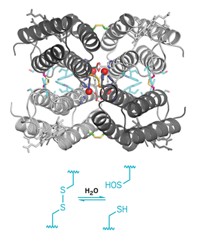Advertisement
Grab your lab coat. Let's get started
Welcome!
Welcome!
Create an account below to get 6 C&EN articles per month, receive newsletters and more - all free.
It seems this is your first time logging in online. Please enter the following information to continue.
As an ACS member you automatically get access to this site. All we need is few more details to create your reading experience.
Not you? Sign in with a different account.
Not you? Sign in with a different account.
ERROR 1
ERROR 1
ERROR 2
ERROR 2
ERROR 2
ERROR 2
ERROR 2
Password and Confirm password must match.
If you have an ACS member number, please enter it here so we can link this account to your membership. (optional)
ERROR 2
ACS values your privacy. By submitting your information, you are gaining access to C&EN and subscribing to our weekly newsletter. We use the information you provide to make your reading experience better, and we will never sell your data to third party members.
Biological Chemistry
Enhancing Bioreceptor Responsiveness
Researchers use biomolecular design technique to rationally engineer cooperative receptors
by Stu Borman
October 13, 2014
| A version of this story appeared in
Volume 92, Issue 41
A generalizable way of boosting bioreceptor sensitivity to small changes in ligand concentration could lead to improved biosensors and more responsive biomaterials (Proc. Natl. Acad. Sci. USA 2014, DOI: 10.1073/pnas.1410796111). The sensitivity of most protein or DNA biosensors is physically limited in that it usually takes a large change in ligand concentration before binding-site occupancy changes significantly. A two-order-of-magnitude concentration increase is typically required to boost binding-site occupancy of a receptor by one order of magnitude. To deal with this problem, nature uses multisite receptors with positive cooperativity—in which an initial ligand such as a drug molecule binds with lower affinity than subsequent ligand molecules, enhancing sensitivity to small changes in ligand concentration. Kevin W. Plaxco of the University of California, Santa Barbara, and coworkers have now designed DNA-based receptors that are similarly cooperative. Their two-site receptors unfold in the absence of a ligand. Binding a first ligand initiates folding, forming a second binding site that is easier to occupy. This sequence increases ligand affinity and improves receptor sensitivity to small concentration changes. Next steps include adapting this mechanism to proteins, Plaxco says.






Join the conversation
Contact the reporter
Submit a Letter to the Editor for publication
Engage with us on Twitter